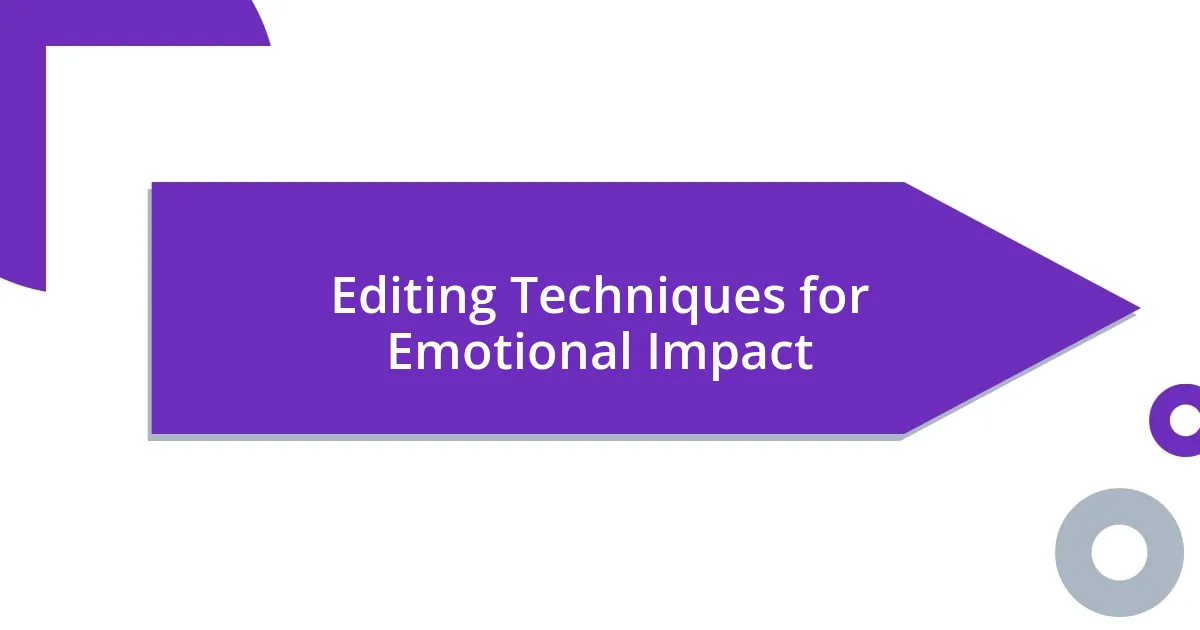Key takeaways:
- Street photography captures candid moments in public spaces, focusing on authenticity and emotion.
- Choosing dynamic locations enhances emotional resonance, with varying lighting conditions affecting the mood of photographs.
- Creating connections with subjects through genuine interaction enriches the narrative of each photograph, transforming casual moments into profound portraits.
- Editing techniques, like contrast adjustments and strategic cropping, are essential for conveying emotional depth in street photography.

Understanding Street Photography Basics
Street photography is about capturing candid moments in public spaces, where the real stories unfold. I remember a chilly afternoon wandering through a bustling market; the laughter, the frowns, and the hurried movements were all stories waiting to be told through my lens. Isn’t it fascinating how a single frame can convey the entire spectrum of human emotion, from joy to despair?
At its core, street photography thrives on spontaneity. You often have just moments to react when a heartfelt scene appears before you. I once photographed an elderly couple sharing a quiet moment on a park bench, their hands intertwined and faces lighting up with smiles as they shared a secret. How often do we overlook such beautiful interactions in our daily lives?
The basic elements of street photography include lighting, composition, and the ability to read the environment. I often find myself drawn to contrasting shades — a shadowy figure against sunlight can evoke a haunting emotion that speaks volumes. Have you ever thought about what drives you to capture certain scenes? Understanding these fundamentals enhances not just your skills but your connection with the humanity that surrounds us.

Choosing the Right Locations
Choosing the right locations for street photography can dramatically influence the emotions captured in your images. I often seek out places that are alive with activity; bustling public squares or local festivals often deliver the kind of raw emotion that resonates with viewers. For instance, during a street fair, I noticed how the joy of children playing contrasted beautifully with the pensive expressions of older attendees, creating a dynamic emotional tapestry.
One of my favorite spots has been an abandoned factory, where remnants of the past create a melancholic ambiance. As I explored the peeling paint and broken windows, I stumbled upon a solitary figure, lost in thought. The sheer contrast of that person against the backdrop sparked such a deep sense of isolation — a moment I will never forget. Choosing locations like this isn’t just about the scene; it’s about the stories that unfold within them.
I’ve also learned that light plays a crucial role in emotional expression. Locations with varying light conditions can evoke different sentiments. For example, shooting at golden hour offers a warm glow that can instill a sense of nostalgia, whereas a dimly lit alley might evoke tension or suspense. I wonder, what emotions do you think a particular lighting setup can awaken in you?
| Location Type | Emotional Impact |
|---|---|
| Public Squares | Joy, Community |
| Abandoned Places | Isolation, Reflection |
| Festivals | Excitement, Playfulness |
| Dimly Lit Streets | Tension, Suspense |

Observing Human Interaction
Observing human interaction is where the magic of street photography truly happens. I vividly recall a moment in a busy café, where a young couple spent an entire afternoon lost in each other’s eyes, their laughter punctuating the air like music. Capturing their interaction made me realize how powerful even the simplest exchanges can be. It’s these authentic moments that reveal the intricacies of relationships, unfolding tales of love, friendship, and sometimes, the pain of parting.
To hone in on these interactions, I often look for:
- Body Language: The subtle gestures and postures can say so much about emotions at play.
- Facial Expressions: A fleeting smile or furrowed brow can narrate an entire story within seconds.
- The Environment: Observing how people react to their surroundings can add context and depth to the moment.
When I snapped a photo of a mother consoling her child after a fall, I felt a surge of compassion rise within me. The warm embrace she offered spoke volumes about care and reassurance. Moments like these make the heart swell. They remind me that each photograph I take isn’t just an image; it’s a fragment of life, holding a powerful emotional resonance.

Capturing Candid Moments
To truly capture candid moments, I often blend into my surroundings, becoming an invisible observer. One evening, while wandering through a vibrant street market, I noticed an elderly man laughing heartily as children tugged at his sleeves, eagerly showing him trinkets from their stalls. That spontaneous laughter, so genuine and infectious, reminded me that joy often lies hidden in everyday interactions, waiting for an attentive eye to reveal it.
Sometimes, it’s the unguarded moments that surprise me the most. On a rainy day, I stumbled upon a woman huddled under an awning, cradling a steaming cup of coffee. As raindrops danced on the pavement around her, she looked up, eyes reflecting a blend of contemplation and contentment. Why do we find beauty in such brief encounters? It’s these fleeting instances that not only evoke emotion but also invite the viewer to connect with the story behind the photograph.
Another valuable lesson I’ve learned is the importance of patience. I often wait in busy spots, allowing life to unfold naturally. A few months ago, I was at a subway station when a musician began to play a soulful tune. The expressions on the faces of passengers, some smiling, others lost in thought, created a captivating scene. Each moment felt precious as I captured not just the musician, but a collective experience. Isn’t it remarkable how a single candid shot can encapsulate a community’s essence in just a heartbeat?

Using Light and Shadow
When it comes to using light and shadow in street photography, I often find these elements dance together to create powerful emotional narratives. I remember one sultry summer afternoon, standing at a bustling street corner, when the sun broke through the clouds, casting dramatic shadows on the pavement. It was as if nature itself was spotlighting a moment: a young woman laughing with her friends, her face illuminated against the darker backdrop. That contrast not only drew my eye but also captured the sheer joy of that instant. Can you feel the energy of her laughter echoing through the shadows?
The way light highlights certain features while overshadowing others can transform an ordinary scene into something extraordinary. One autumn evening, I found myself wandering through an old neighborhood at dusk. The golden hour light danced off the brick buildings while long shadows stretched across the road. I observed an elderly man sitting on a bench, half his face bathed in the warm glow, the other half cloaked in shadow. This striking interplay of light and darkness conveyed his solitude, yet within that shadow lay a world of memories. Isn’t it fascinating how light can evoke such deep emotional connections?
I also like to experiment with backlighting, where subjects appear as silhouettes against a bright source of light. One memorable instance was at a train station during sunset. As commuters rushed about, a mother and child embraced in the glow of the setting sun. Their figures became dark shapes framed by light, capturing a moment of love amidst the chaos. The silhouette told a story of connection that transcended mere words. What emotions come to mind when you think of silhouettes in your own life? In street photography, this technique can truly amplify the emotional weight of an image.

Creating a Connection with Subjects
When creating a connection with subjects in street photography, I often approach them with genuine curiosity. I remember a sunny afternoon at a local park where I overheard a couple reminiscing about how they met. I casually struck up a conversation with them, discovering their story while capturing their smiles. This simple engagement transformed my photos into powerful portraits, each frame holding not just their likeness but also the warmth of shared memories. Isn’t it magical how openness can bridge the gap between the observer and the subject?
Building rapport can be achieved in small gestures, too. One day, I noticed a street vendor passionately crafting handmade jewelry while chatting with a customer. Instead of snapping a quick picture, I asked about her craft and aspirations. Her face lit up as she shared her journey, and I could feel her pride emanate through the lens. That emotional connection turned an ordinary shot into a vibrant portrayal of her world. Have you ever paused to ask someone about their story? It can lead to breathtaking moments that speak volumes.
I find that being present in the moment creates an unspoken bond between me and my subjects. While at a lively food festival, I spent time observing a chef skillfully preparing his signature dish. As he explained the ingredients to me, his passion was palpable. Capturing his focused expressions while he worked wasn’t just about the dish; it was about celebrating his dedication. The authenticity in the photograph tells a richer story, invoking curiosity and empathy in the viewers. How often do we let such connections slip away in the hustle of daily life? Embracing these interactions can profoundly enhance our photographs and deepen the narratives we convey.

Editing Techniques for Emotional Impact
Editing plays a vital role in amplifying the emotional messages behind street photography. I often spend time adjusting contrast and saturation to elevate the atmosphere of my images. I remember one occasion where, after shooting a rain-soaked street scene, I darkened the blues and emphasized the warm yellows, transforming a simple moment into a poignant reflection of solitude. Don’t you see how subtle changes can shift the entire mood of an image?
Another technique I frequently use is cropping strategically to focus attention on emotions. There was a time I captured a woman lost in thought on a bus. Initially, I framed the entire scene, but upon re-evaluation, I cropped in closely on her expression. Suddenly, her subtle sadness became palpable—the viewer could almost feel her longing. Have you ever noticed how a well-placed crop highlights the essence of a story? It’s like zooming in on a whisper in a crowded room.
Lastly, I can’t stress enough the impact of color grading on emotional resonance. In one project, I experimented with warmer tones to evoke nostalgia in images from a community event. By softening the shadows and adding a golden hue, the photographs began to breathe memories of warmth and connectedness. What emotions do certain colors evoke in you? Recognizing this connection allows us to guide the viewer’s feelings, creating a deeper engagement with our work.














